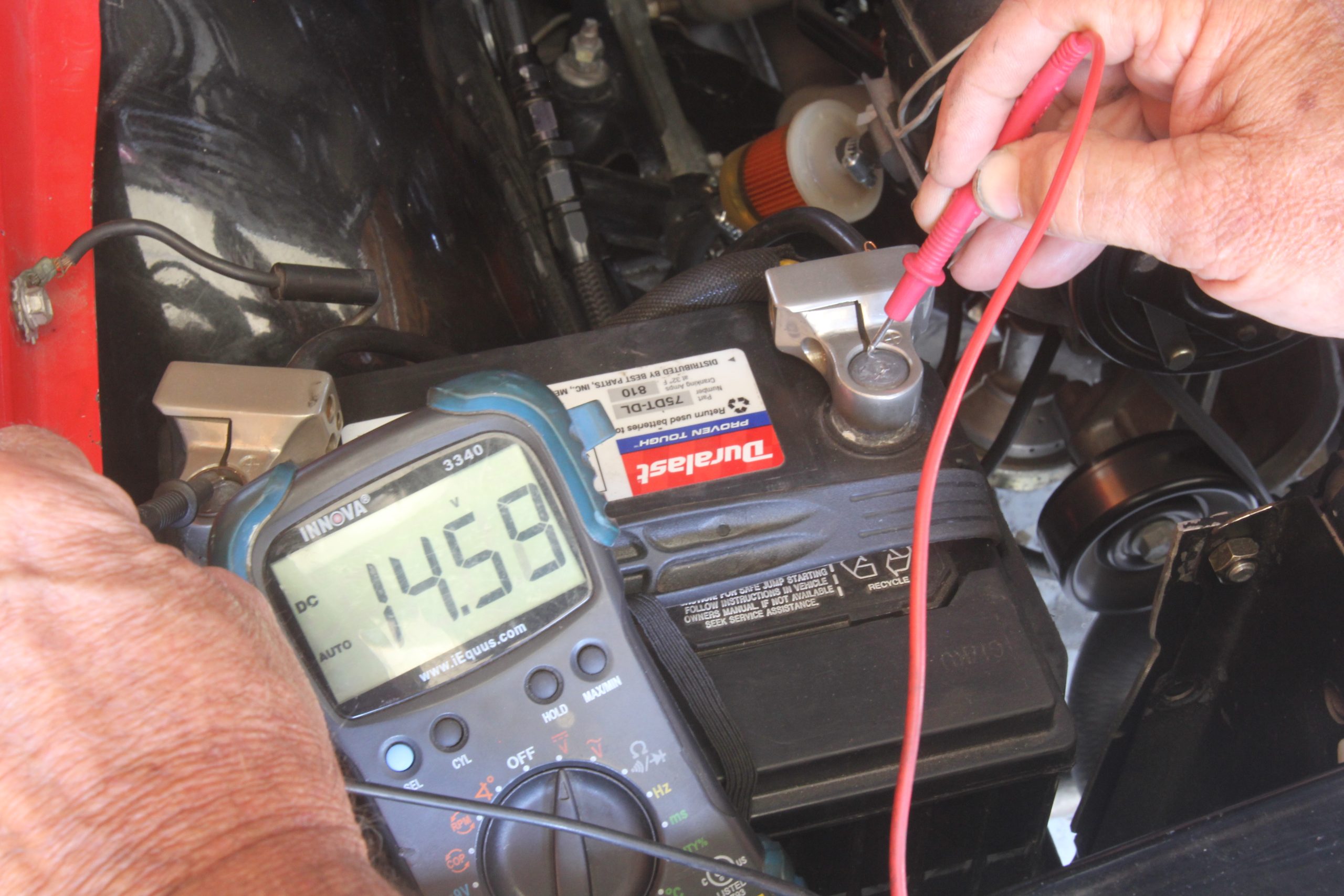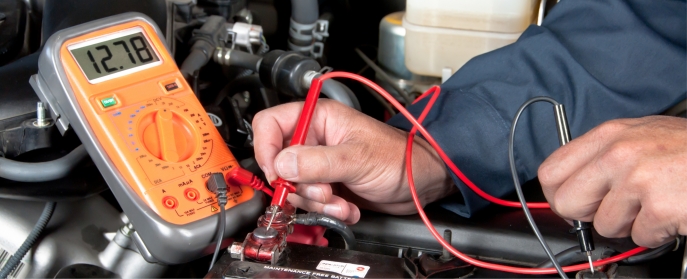Can You Check a Car Battery With a Multimeter? Yes, Here’s How!
Yes, you can check a car battery with a multimeter by measuring its voltage. Ensure your multimeter is set to the correct DC voltage range before testing.
Car owners often need a straightforward way to assess battery health, and a multimeter provides a reliable solution. This handheld device allows for quick diagnostics of a car battery’s state, revealing if the power source maintains the necessary charge for operation.
By measuring voltage, a multimeter can indicate whether a battery is adequately charged, which is crucial for starting your vehicle and ensuring that all electronic components function correctly.
With its versatility and precision, a multimeter is an essential tool in automotive maintenance, providing instant results that inform whether further inspection or replacement is necessary. Proper use of a multimeter helps drivers avoid unexpected battery failures and maintain consistent vehicle performance.

Benefits Of Using A Multimeter
Understanding the health of a car battery is crucial for reliable vehicle operation. A multimeter is a handy tool that can help drivers ensure their battery is in top condition.
Learning the Benefits of Using a Multimeter can save time, money, and prevent roadside emergencies. Let’s delve into how a multimeter can offer accurate and versatile measurements.
Accuracy
Using a multimeter to test a car battery is highly accurate. It provides an exact voltage reading, which is essential to determine the battery’s state of charge. The precision of a multimeter helps to:
- Detect voltage fluctuations that may not be apparent with other testing methods.
- Identify weak batteries before they fail, ensuring your vehicle starts every time.
- Prevent overcharging or undercharging, which can extend the battery’s life.
Versatility
A multimeter does not merely check car batteries; it is a versatile tool for various diagnostics:
- Test electrical components like alternators, relays, and fuses.
- Detect problems in car wiring and electrical systems.
- Measure resistance and continuity of electrical connections.
By assessing different metrics, a multimeter is indispensable for automotive troubleshooting.
Steps To Check A Car Battery
Knowing how to check your car battery’s health is essential for any driver. A healthy battery ensures your car starts reliably day after day. One of the simplest and most accurate ways to test your battery is with a multimeter. This versatile tool can provide a quick snapshot of your battery’s voltage, indicating its current state of charge. Below are the steps to safely and accurately check a car battery with a multimeter.
Set Up Multimeter
Before testing the battery, ensure the multimeter is properly set up:
- Turn off your car’s engine.
- Select DC Voltage on your multimeter.
- Adjust the multimeter to the 20 volts setting.
Test Battery Voltage
With the multimeter ready, follow these steps to test the car battery’s voltage:
- Locate the car battery. It’s usually under the hood.
- Identify the positive (+) and negative (-) terminals.
- Connect the multimeter’s red probe to the positive terminal.
- Connect the black probe to the negative terminal.
- Read the voltage on the multimeter’s display.
A reading of 12.6 volts or higher indicates a fully charged battery. A voltage between 12.4 and 12.6 volts means the battery is in a good state. If the reading shows 12.0 volts or less, the battery is considered discharged or possibly damaged.
How to Test a Car Battery with a Multimeter – Watch the YouTube
Reading a Multimeter for Testing Car Battery
Testing a car battery with a multimeter is a quick way to assess its health. A multimeter measures voltage, and this simple test gives valuable insights. Knowing how to interpret these readings is key. A healthy battery and a failing one have clear, distinct voltages. Let’s break down these numbers to keep your car running smoothly.
Healthy Battery Range
A fully charged car battery should read around 12.6 volts or above when the car is off. This voltage indicates that the battery is in good condition.
- 12.5 – 12.6 volts: Your battery is healthy.
- 12.4 volts: Your battery is fair.
Low Voltage Indications
If the voltage drops below 12.4 volts, it’s a sign of concern. Your battery voltage should not be in this range. A reading below 12 volts is an alarm: Your battery needs attention.
| Voltage Range | Battery Status |
|---|---|
| 12.3 volts | Charge soon. |
| 12.2 volts | Weak battery, charge now. |
| 12.0 volts | Poor charge, risk of failure. |
| 11.9 volts or less | Dead battery, replace if charging fails. |
Additional Considerations
Discovering the secret life of your car battery doesn’t end with a simple voltage check. It takes a deeper dive to ensure your vehicle’s electrical system hums with precision. For a comprehensive health check, look beyond the multimeter. The charging system, especially the alternator, plays a pivotal role. Trust, yet verify, by turning a discerning eye to additional checkpoints that safeguard your road trips.
Testing Alternator
Not just a battery—your alternator deserves attention, too. Think of your car’s alternator as its heart, pumping life through the car’s veins. A healthy alternator means a reliable car. Use your multimeter to test alternator output by selecting the AC voltage setting. Probes go on battery terminals while the engine idles. Look for readings around the 14-volt mark. That’s the sweet spot, indicating a smooth-running alternator. Exact requirements vary by make and model, so grab your manual for specifics.
Consulting Professional
Consider expert insight a valuable resource. If numbers are not stacking up, don’t hesitate. Seek a professional. They use specialized tools to peer into a battery’s soul, beyond what a multimeter reveals. They check the entire charging system along with the battery’s ability to hold charge and deliver power. A pro won’t just provide a diagnosis—they’ll offer clear solutions for your vehicle’s specific needs.
Tips For Maintaining Car Battery
A well-maintained car battery ensures reliability when hitting the road. Understand how to keep your car battery in top condition with these easy tips.
Regular Inspection
Regularly check your battery’s condition to avoid surprises. Look for signs of damage or wear.
- Check for corrosion on the terminals.
- Inspect the battery case for cracks or bulges.
- Ensure the hold-down clamps are tight.
Use a multimeter to check the voltage. A reading of 12.6 volts or above typically means your battery is healthy.
Proper Terminal Cleaning
Keep the battery terminals clean to ensure a good connection with your car’s electrical system.
- Turn off the car and wait a few minutes.
- Remove the terminal covers and loosen the clamps.
- Clean the terminals with a wire brush.
- Neutralize acid build-up using a mixture of baking soda and water.
- Rinse with clean water and dry thoroughly.
- Reattach clamps and covers securely.
Performing these steps regularly can prevent corrosion and power loss.

Credit: haynes.com
Frequently Asked Questions Of Can You Check A Car Battery With A Multimeter?
How Do I Test My Car Battery With A Multimeter?
Turn off your car and all accessories. Set multimeter to the DC voltage setting, usually marked with a “V” and a straight line. Connect the multimeter’s red probe to the battery’s positive terminal and the black probe to the negative terminal.
How Do You Test A Disconnected Car Battery With A Multimeter?
To test a disconnected car battery with a multimeter: 1. Set your multimeter to the DC voltage scale (20V setting). 2. Connect the multimeter’s red probe to the battery’s positive terminal. 3. Attach the black probe to the battery’s negative terminal.
How Do I Check If My Car Battery Is Ok?
To check your car battery’s condition, use a multimeter set to voltage and measure across the battery terminals; a reading of 12. 6 volts or above indicates a fully charged battery. A reading under 12. 4 volts suggests your battery may need charging or replacement.
At What Voltage Is A Car Battery Dead?
A car battery is usually considered dead at 12. 0 volts or less.
Conclusion
Understanding how to use a multimeter for checking car batteries is invaluable. This handy tool demystifies auto maintenance, providing clear voltage readings. Always remember, safety comes first; respect the power of the battery and your multimeter. With practice, you’ll enhance car care and possibly avoid roadside troubles.
For any uncertainties, contact a professional. Keep your car running smoothly and your battery in check!






